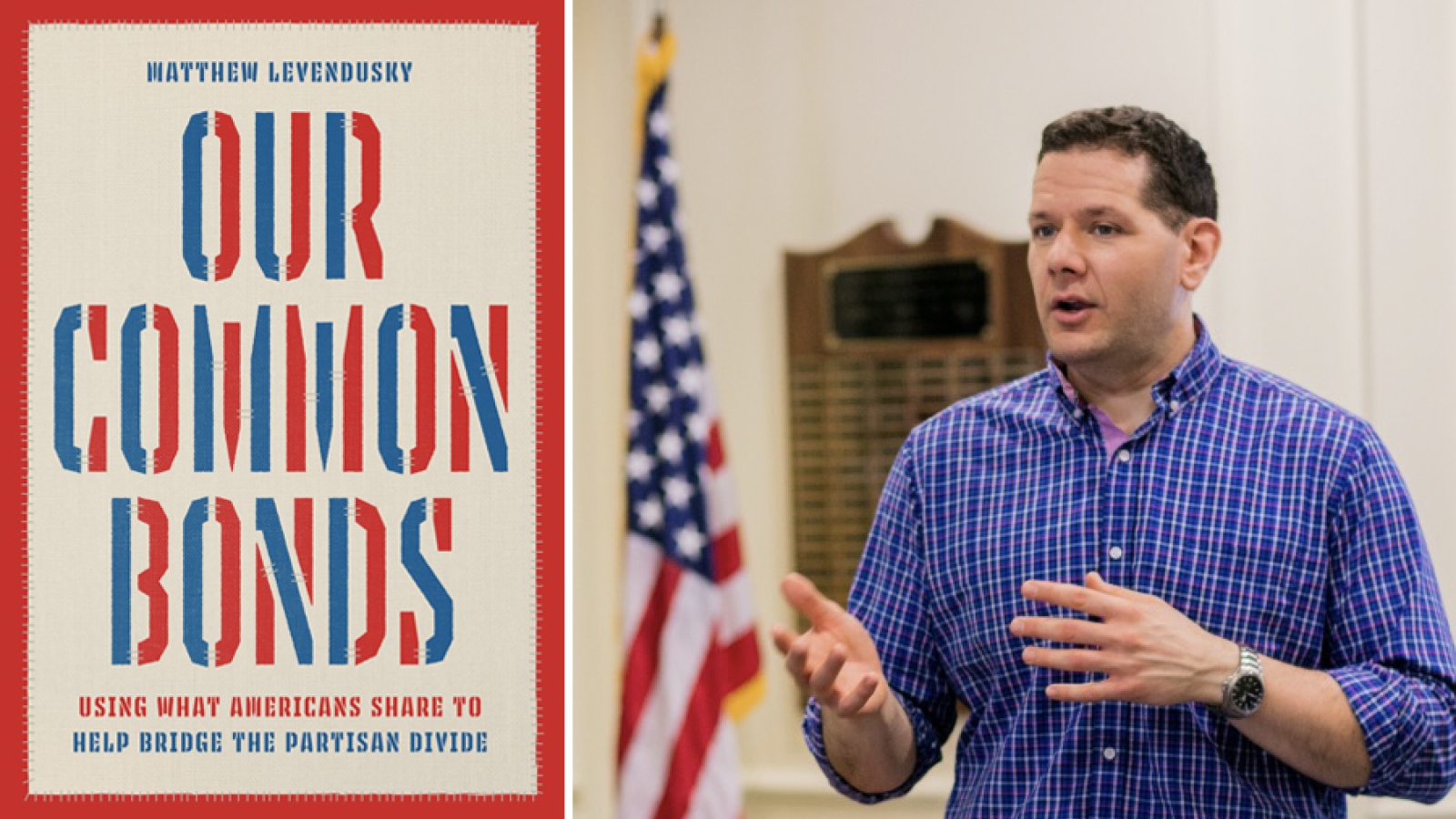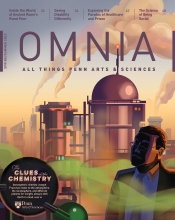Bridging the Partisan Divide with Ordinary Conversation
In his new book, Matt Levendusky, Professor of Political Science, explores methods to reduce the animosity between political factions.

They had reserved the space at a Bucks County library for two hours and recruited strangers through Facebook ads for conversations between Democrats and Republicans, but Matt Levendusky was not sure what to do when two people remained past the scheduled time. “Well,” Levendusky said to his research assistants, “should we say something to them?” A librarian who needed the room made the decision for everyone.
But the two people, one a Democrat, the other a Republican, exchanged information and vowed to continue their discussion. Levendusky, a professor of political science and the Stephen and Mary Baran Chair in the Institutions of Democracy at the Annenberg Public Policy Center, held these experiments across the Delaware Valley four years ago. They were civil. They were instructive. “Often people came up to us at the end and they said, ‘Oh, I learned something more than I thought I would by talking with people who are different than me. I got a new perspective,’” Levendusky says. “That’s kind of nice.”
In his new book, Our Common Bonds: Using What Americans Share to Help Bridge the Partisan Divide, Levendusky explores methods to reduce the animosity between political factions—an optimistic concept, but one he believes is prudent.
Those conversations—often not as memorable as the two people who lingered that afternoon at the library—shaped an idea Levendusky had pursued about American identity in a charged political landscape. These were “ordinary exchanges,” as Levendusky termed them, and there was something to them.
“If I’m a Democrat and I think about Republicans,” Levendusky says, “I’m likely to think about the person who’s on my Facebook feed talking about how the media have it in for Donald Trump, or someone I see interviewed at one of his rallies. But these people are quite atypical, and I might feel differently about a more typical Republican. Part of what links the strategies in the book is trying to get people to reduce some of these misperceptions to dampen some of that animosity.”
Those misperceptions, as Levendusky writes, are not the only explanation for animus. But they are an important one. There is strong evidence to show a rise in “affective polarization”—a phenomenon that underscores the hatred between the two sides despite, at times, smaller disagreements on actual issues.
“So Democrats or Republicans, for example, say that they don’t want to be neighbors with one another,” Levendusky says. “They don’t want to work with one another. They don’t want to even do completely apolitical things with one another. It’s this sense of animosity often at a personal level that is distinct from the fact that Democrats or Republicans might take different positions on, say, taxes or abortion.”
Of course, there is no eliminating the acrimony across the political spectrum, but it can, perhaps, be reduced. “Part of it is just about getting people to realize that there can be legitimate differences without that breaking down into animosity,” Levendusky says. This is why he returns to those ordinary exchanges. There are artificial barriers because people believe political conversations are inherently conflictual and uncivil.
“We saw what would happen when we have them engage in a civil cross-party exchange,” Levendusky says. “It’s interesting because people do find out that they agree with the other side more than they thought they would. But a more important factor behind these effects is realizing, ‘Oh, actually, I can disagree without being disagreeable. And I can also see that they have some reasonable positions, even if I disagree with them.’”
This is why, in Levendusky’s view, it’s time to have more productive conversations.



